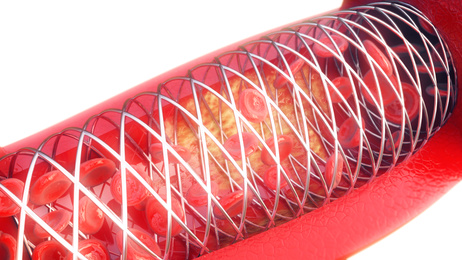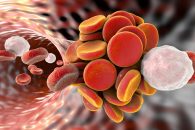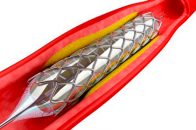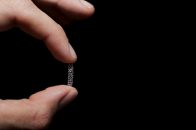The best strategy to treat in stent restenosis continues to be a dilemma. A new drug eluting stent (DES) seems to be the simplest treatment, even though it adds metal layers that will make it harder and harder to retreat. Drug coated balloons might be a viable alternative seeing as it seems to enable retreatment,…
TCT 2020 | The Myth of Biodegradable Polymers Seems to Have Come to an End
This is the largest and newest study to compare drug eluting stents with durable polymers vs. biodegradable or bioresorbable polymers. As is usually the case, the theory clashes with reality. The study has shown that the polymer does not seem to play an important role in the performance of drug eluting stents, or at least…
ISAR-TEST-5: 10 años de los DES con polímero vs sin polímero
After 10 years, unstable or chronic coronary patients revascularized with drug-eluting stents (DES) had similar, very good outcomes regardless of whether the DES did or did not have a polymer, according to the ISAR-TEST-5 study, recently published in J Am Coll Cardiol. The 10-year device-oriented endpoints occurred in 43.8% of patients treated with a polymer-free sirolimus-eluting…
Two-Stent Strategy is Safer in True Bifurcation Lesions
Courtesy of Dr. Carlos Fava. DES have improved PCI outcomes, but one of its biggest challenges continues to be bifurcations (especially when we have to use two stents, since it’s been associated to higher restenosis and stent thrombosis rates). Left main coronary artery true bifurcation lesions are the ones that generate the greatest challenge and…
Onyx ONE: More Options for Patients at High Risk for Bleeding
Since November 2015, when the LEADERS FREE was published in NEJM, polymer-free drug coated stents had undoubtedly been the best treatment for patients at high risk of bleeding. The benefit was owed to the safety and efficacy of the polymer-free biolimus coated stent (also called umirolimus) vs. bare metal stents in the context of just…
Thin, Very Thin, and Ultrathin Struts, with Permanent or Biodegradable Polymer… Which Is the Best Combination?
Results from the BIO-RESORT trial at three years, soon to be published in JACC Intv., show that, despite significant differences among stents as regards strut thickness and capability to reabsorb the polymer, there are no apparent safety or efficacy differences among devices. The aim of this study was to determine the three-year safety and efficacy…
EuroPCR 2019 | Stent Firehawk Continues to Show Good Results at 2 Years vs. Xience
This device, an abluminal groove-filled biodegradable-polymer sirolimus-eluting stent manufactured in China, showed very similar efficacy and safety to the “gold standard” everolimus eluting Xience at 2-year follow up, according to the TARGET outcomes, presented yesterday at the EuroPCR 2019 and simultaneously published in J Am Coll Cardiol Intv. The device, which is manufactured in China…
DES and DCB with Similar Results in Femoropopliteal Artery Disease
Courtesy of Dr. Carlos Fava. Nowadays, peripheral interventions are on the rise and the technological development of stents and balloons would help achieve better outcomes. Both drug-eluting stents (DES) and drug-coated balloons (DCB) have proved to be beneficial for femoropopliteal interventions, but the actual role of each of these technologies remains unclear. This prospective, randomized 1:1…
Drug eluting Stents vs. Drug Coated Balloons for In-Stent Restenosis
The rationale behind the decision to not add another layer of metal to the artery sounded attractive and this was what paved the way for drug coated balloons as an alternative strategy to treat in-stent restenosis. “We’ve already got a stent in place, we only have to dilate and leave the drug” is what we…
Abluminal Sirolimus and luminal CD34 antibody layer: Is COMBO the Future of Stents?
This large cohort of patients treated with the dual therapy COMBO stent has showed excellent outcomes after one year (MASCOT Post Marketing Registry). Long term follow up is still ongoing. The COMBO stent is a new device with an abluminal sirolimus biodegradable polymer and a luminal layer of antibodies that promotes endothelial healing (anti CD34+)…








